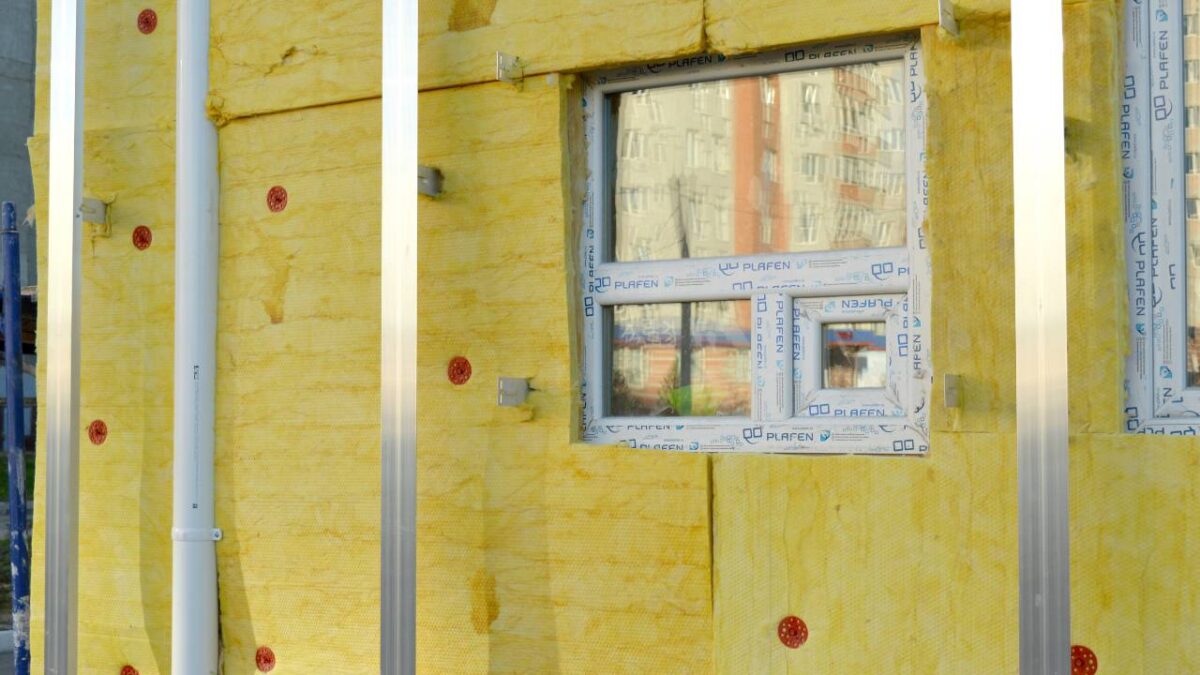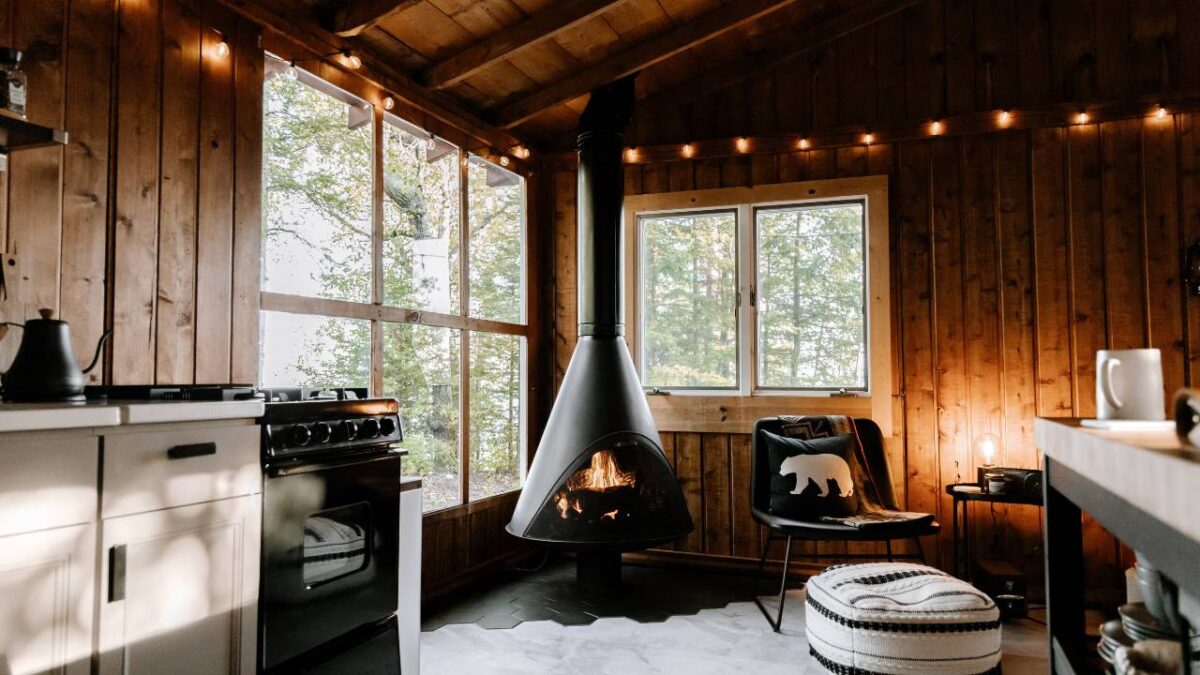You might initially consider adding soft furnishings, plush rugs, and warm lighting when designing cosy spaces. While these elements certainly contribute to a comfortable atmosphere, the foundation of a genuinely cosy home lies in proper insulation. Effective insulation keeps your home warm, lowers your energy bills and helps reduce your carbon footprint, creating a comfortable and environmentally friendly space.
So, where do you start when it comes to optimising your home’s insulation? Begin by learning about the various insulation materials available, their properties, and their ideal applications. This article will serve as your guide, offering valuable insights on insulation’s impact on designing cosy spaces. Armed with this knowledge, you’re sure to create a warm and welcoming environment that you and your loved ones can enjoy year-round.
Understanding Home Insulation
Essence of Insulation
Insulating your home is essential for maintaining a comfortable living environment and reducing energy consumption. Proper insulation keeps your home warm in winter and cool in summer, significantly reducing energy bills. Investing in sound insulation is an effective energy-saving solution in older homes, where insulation might be lacking or insufficient.
By working with a trusted company like Usher Insulations, you can reduce heat loss and increase energy efficiency within your home. In turn, this will benefit both your wallet and the environment.
Types of Insulation
Various types of insulation are available, each suited for different areas of your home. Here are three main types to consider:
- Mineral Wool Insulation – Comprised of rock or glass fibres, mineral wool insulation is typically used for loft insulation and soundproofing. It provides exceptional thermal and acoustic insulation, making it a popular choice among homeowners.
- Cavity Wall Insulation – Primarily used for insulating the gap between the walls in older homes, cavity wall insulation is designed to prevent heat loss through the walls. Since heat loss can account for up to 35% of your home’s energy consumption, it’s essential to consider this type of insulation.
- Solid Wall Insulation – Ideal for homes with solid walls, this insulation method involves adding a layer of insulating material on the interior or exterior wall surface. While it can be more costly than other insulation methods, the long-term energy savings make it a worthwhile investment.
Insulation and Sustainability

Eco-Friendly Materials
When you’re looking to improve your home’s insulation, consider using eco-friendly materials. These sustainable choices provide excellent insulation and help reduce your carbon footprint. Additionally, green insulation materials tend to be longer-lasting, reducing waste and providing long-term benefits for you and the environment.
Some popular options include:
- Sheep’s wool – A natural and renewable resource that excellently retains heat.
- Recycled cellulose – Made from recycled newspaper, this material is treated to be fire-resistant and pest-repellent.
- Wood fibre – Sourced from sustainably managed forests, wood fibre boards can offer good thermal and acoustic insulation.
Reduction of Carbon Footprint
Proper insulation can significantly reduce your carbon footprint by lowering your energy bills and reducing your reliance on fossil fuels. You’re actively contributing to a greener future by choosing sustainable home living.
A well-insulated home will require less energy to heat and cool, so you’ll see a noticeable difference in energy consumption. Here’s what you can expect:
- Save on energy bills – By retaining heat more effectively, you’ll rely less on heating systems, reducing energy costs.
- Lower emissions – Decreased energy usage means reduced greenhouse gas emissions, contributing to a cleaner environment.
Techniques for Insulating Your Home
When designing cosy spaces, insulating your home plays a crucial role. By implementing proper insulation methods, you can reduce heating bills and maintain a comfortable temperature throughout your home. This section will cover insulating walls, roofs, lofts, and floors.
Insulating Walls
There are two main types of walls: cavity walls and solid walls. Cavity walls have a gap between two brick layers, while solid walls have no gap. Insulating your walls will keep the warmth inside and reduce heat loss.
- Cavity walls – You can fill the gap with insulating material to give your home better heat retention. It is a straightforward process and generally cost-effective.
- Solid walls – Insulating a solid wall can be more expensive, but it significantly reduces heat loss. You can choose between internal or external insulation, depending on your preferences.
Always check for draughts and seal gaps around windows, doors, and pipes to improve your home’s insulation further.
Insulating Roofs and Lofts
Much heat can escape through your roof and attic if not properly insulated. Here are some techniques to help insulate your roof space:
- Loft insulation – You can insulate your loft space using materials like mineral wool to improve heat retention.
- Roof insulation – Insulate your roof by laying insulation material between the rafters or providing an insulated board on top of it.
Installing a hot water cylinder jacket on your hot water tank also helps reduce heat loss. Remember to seal around pipes and cover radiators with reflector panels to direct the heat away from your walls and back into the room.
Insulating Floors
Approximately 10% of heat loss in a home occurs through uninsulated floors. Insulating your floors not only keeps your home warm but also reduces draughts.
- Solid floors – You can insulate solid floors with rigid insulation boards placed directly on top, covered by a new floor surface such as tiles or laminate.
- Suspended timber floors – These floors can be insulated by laying mineral wool between the joists and topping them with a solid layer.
The Comfort Aspect

Creating Cozy Spaces
When designing your home, one key aspect to consider is comfort. Creating a cosy environment makes you feel more relaxed and at ease in your space. To help achieve this feeling, you can combine insulation techniques and decorative elements that foster warmth.
Good home insulation is essential for maintaining warmth and comfort in your living space. This includes insulating your walls, floors, and ceilings and installing double-glazed windows. This will improve your overall comfort and help reduce energy bills.
Colour Use for Comfort
Colour plays a significant role in creating a comfortable atmosphere. Warm colours such as red, orange, and yellow evoke warmth and cosiness, making them ideal for creating a soothing environment. You can apply these colours in various ways, such as painting your walls, incorporating patterned textiles, or adding decorative accents in warm hues.
In contrast, cool colours like blue often promote relaxation and tranquillity. While these colours may be less associated with warmth, using them in moderation can create a cosy atmosphere. Consider combining warm and cool colours to achieve a balanced and harmonious colour scheme.
To further enhance the comfort and ambience of your home, consider incorporating plants into your home’s design and using warm lighting. The latter consideration can significantly improve your home’s cosiness – soft, diffused light from sources like table lamps, floor lamps, or a fireplace can create a warm, welcoming environment. Combined with the right colours and insulation, these elements create a truly cosy and comfortable space for you to enjoy.
Economic Aspects of Home Insulation
Saving Money with Insulation
Upgrading your home insulation can do wonders for your wallet. Proper insulation significantly reduces your energy bills by keeping your home warmer in winter and cooler in summer. This means you’ll spend less on heating and air conditioning, lowering energy costs.
You’ll notice a reduced heating bill as your home retains more heat, making you feel comfortable in your space without cranking up the thermostat. Not only will you be saving money, but you also contribute to a more energy-efficient home that benefits the environment.
Here are some key points to consider:
- Energy savings – Insulating your home can save you up to 40% on your heating and cooling bills.
- Climate – Homes in colder climates will likely see more significant savings with better insulation.
- Existing insulation – Upgrading or replacing old, worn-out insulation helps maximise your energy efficiency improvements.
Assessing the Costs
The initial insulation materials and installation costs may seem high, but you should consider it an investment that will pay off in the long run. To select the best insulation for your needs, it’s crucial to consider the money you will save on energy bills over time and whether the insulation upgrade can increase your home’s value.
Some typical costs include:
- Material costs – Insulation material prices vary based on the type, quality, and quantity needed for your space.
- Labour costs – Professional installation fees differ depending on the complexity and size of the job.
- Maintenance costs – Depending on the type of insulation, you might need some maintenance work periodically to maintain its efficiency.
Does Insulation Affect Aesthetics?

When designing a cosy space, insulation is essential in ensuring comfort and energy efficiency. You might be wondering if home insulation has any impact on the aesthetics of your space. The good news is that it can blend seamlessly into your design without compromising style.
When selecting insulation materials, you have various options, including wood, concrete, stone, plastic, and bricks. Each of these materials comes with its unique set of properties and can cater to different visual preferences. Wood, for example, creates a warm and inviting atmosphere, whereas concrete and stone offer a modern, industrial ambience.
It’s important to remember that insulation doesn’t have to be limited to walls and ceilings – it can also be integrated into functional and multi-functional furniture. You can opt for custom-built seating with built-in insulation or add insulated cushions to your favourite pieces. These choices not only help maintain a comfortable temperature but can also contribute to the overall aesthetic of your space.
You can strategically use vertical storage to maximise insulation while maintaining visual appeal. This could mean placing shelves, bookcases, or cabinetry around your home to provide extra insulation while showcasing your style. Moreover, such storage solutions can free up floor space, allowing you to incorporate more seating, décor, or plants that contribute to the snug vibe of your area.
Understanding the Impact of Insulation on Home Design
Incorporating proper insulation is crucial in creating a warm and inviting atmosphere when designing a cosy space. Since you want your home to be a comfortable retreat from the outside world, focusing on insulation can make a significant difference.
The first thing to consider is your choice of functional furniture. Multi-functional furniture like a sofa bed not only saves space but can also help retain heat better than multiple small pieces. Suppose you opt for large pieces like a comfy sectional sofa. In that case, it’ll keep the insulation at a desired level and give your home a charming vibe.
Paying attention to textures is essential, too. Adding soft and thick textures like pillows, blankets, and rugs creates a sense of warmth and comfort. Throws draped over your furniture can further enhance the feeling of cosiness.
Layering soft furnishings is also an excellent way to reinforce your home’s insulation. Cushions in various textures and materials can be scattered on your sofa bed or armchair to create a luxurious and inviting environment.
Lighting plays a crucial role in creating a cosy atmosphere. Swap harsh, bright lights with soft, warm lamps that provide a subtle glow. Floor or table lamps with fabric shades and dimmable options are perfect for crafting a snug and welcoming space.
As for the walls, detailed wall mouldings can transform bare surfaces, adding both visual interest and increased insulation. Wainscoting or decorative trims give the warmth and depth of your room while discreetly safeguarding your walls from draughts.
Fixing Insulation Issues in Your Home
When you notice drafts or cold spots in your home, it may be a sign that it’s time to address insulation issues. Insulation plays a crucial role in maintaining a warm and cosy atmosphere, so tackling any problems as soon as possible is essential. In this section, we’ll discuss some common insulation issues and how you can fix them.
Firstly, inspecting your home for any damage to your insulation is essential. Damaged insulation can result in increased heat loss and affect your home’s energy efficiency. Search for cracks or gaps in walls, around doors and windows, and in the attic. If you find any damage, it’s essential to seal the cracks or gaps using an appropriate sealing material, such as caulk or expanding foam.
Another essential step in improving insulation is draught-proofing. Draughts can make your home feel much colder than it needs to be, so it’s crucial to eliminate them. You can draught-proof your home by investing in draught excluders for doors, sealing gaps around windows with weather stripping, and insulating letterboxes or keyholes. Be mindful not to block necessary ventilation, as proper airflow is essential for a healthy living environment.
In addition to addressing damage and draughts, ensure your home has adequate insulation. This can involve inspecting and topping up loft insulation, ensuring wall cavities are filled, or considering underfloor insulation. Investing in good quality insulation can improve your home’s energy efficiency and make it easier to maintain a comfortable temperature.
Finally, pay attention to the importance of ventilation. While it’s crucial to minimise draughts, it’s also essential to maintain appropriate airflow, especially in areas like kitchens and bathrooms. Ensure that extractor fans function correctly and that vents are clear and unobstructed.
Conclusion
Effective home insulation plays a significant role in creating a comfortable environment when designing cosy spaces. Investing in proper insulation can maintain a consistent indoor temperature, reduce energy costs, and enhance your overall well-being.
Ensure that you choose the right type of insulation for your home. Popular options include fibreglass, rock wool, and cellulose. Each material has advantages and drawbacks, so it’s essential to carefully consider your home’s specific requirements before deciding.
By focusing on insulation and these additional elements, you can create a warm and inviting space you’ll love spending time in. Not only does good insulation contribute to a cosy atmosphere, but it can also help protect your home against moisture, mould, and unwanted sounds. So, it’s worth investing in high-quality insulation materials and techniques to achieve the best possible results for your living space.






